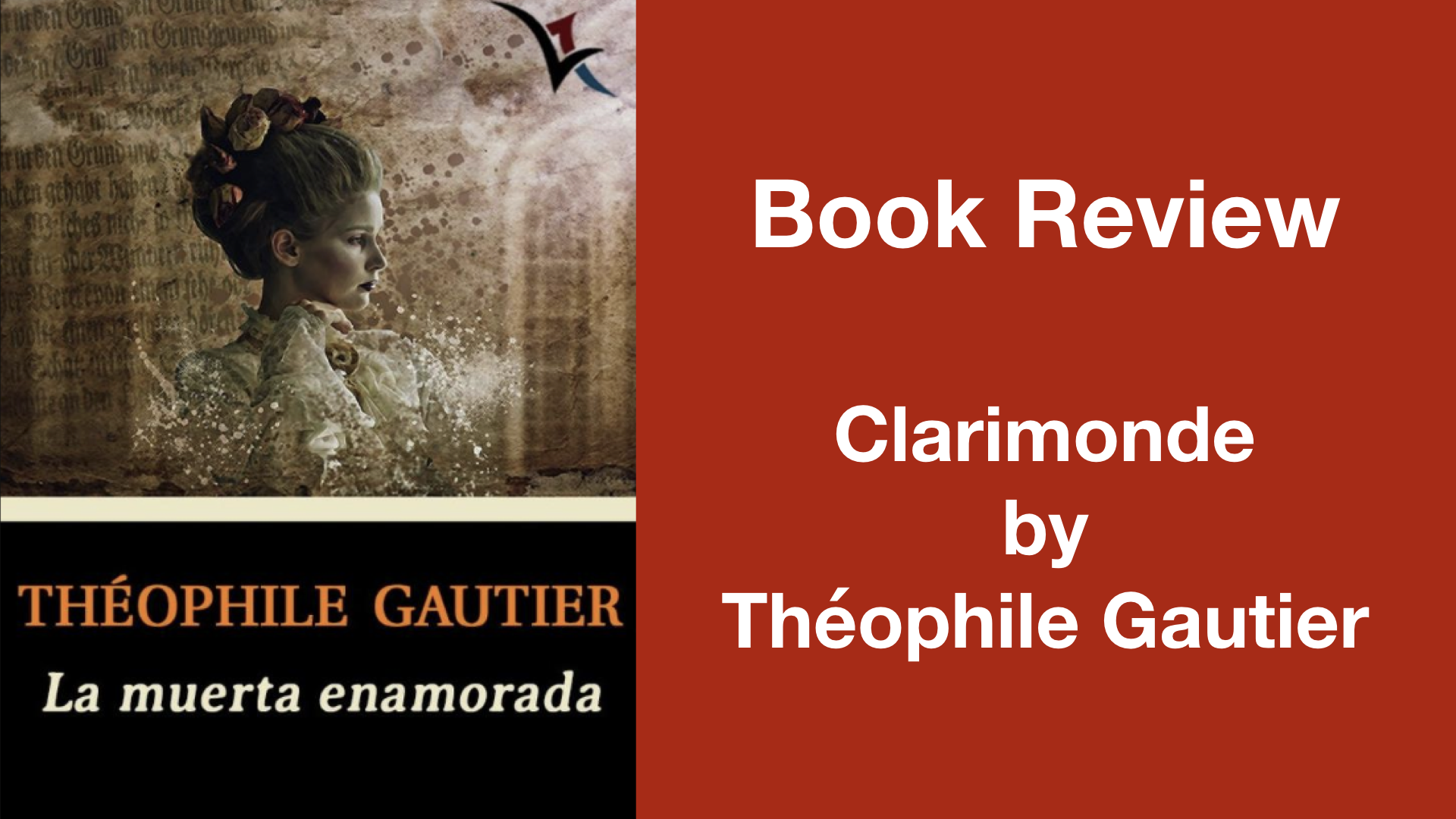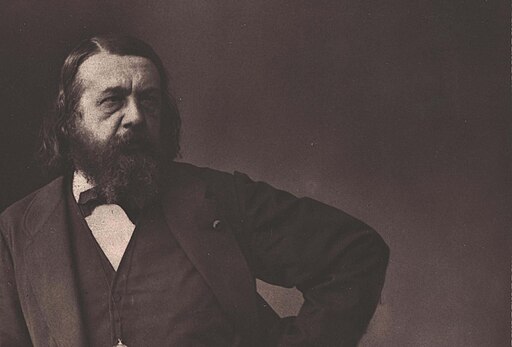Near the end of the month of love and friendship, I would like to share my thoughts on “Clarimonde” (The Dead Woman in Love) by Théophile Gautier. This short narrative is not to be missed for its themes and the splendid narrative style of the 19th-century French author.
The title of the work, in the first instance, immediately caught my attention by relating death to love. Of course, nowadays, this relationship is more than trite, in sagas such as Twilight, by the American author Stephenie Meyer, or by the various film adaptations of the famous novel “Dracula” by Bram Stoker. Yes, you can see them. Today's comments are about the romance between a human and a vampire. Almost certainly, I dare to affirm that, if it is not the first in its style, it will be the second, behind John Polidori's “The Vampire”. By the way, for the latter, the author was inspired by the gatherings at Villa Diodati, near Lake Geneva, in 1816, where he participated with Lord Byron, Mary Shelley, and Percy Bysshe Shelley. In these evenings, favored by the prevailing bad weather, Mrs. Shelley began to write “Frankenstein”.
I suppose that Gautier, as an enlightened intellectual of his time, must have read the works of these literary geniuses, and also knew the supernatural and dark folklore. Where enigmatic and seductive beings, served as terror to the transgressors of the moral and ethical accepted in the Europe of his time. In this sense, it is to be understood that the author found a lot of inspiration for his short gothic novel since it will have at most 30 pages. The story is told from the perspective of a seminarian who, on the day of his ordination as a priest, has a fleeting visual encounter with a beautiful and captivating woman, Clarimonde, who plunges him into the predicament and torment between the virtuousness of the monastic and the sensuality of the bohemian life. The connecting thread in both cases: is love. One sublime and the other earthly.
The novelist deals here very well with the themes of obsessive and illicit love, the conflict between faith and desire, the debate between mortality, and the search for immortality. Through a fluid style, rich in descriptions, he expresses a dark and melancholic atmosphere. In addition to the state of emotional turmoil caused by the moral conflict during the introspections of the protagonist and narrator, Father Romualdo, it also conveys the passion and ardor he feels for the supernatural figure of the vampire, the object of his dangerous carnal love. It is inhabited by two men in dispute.
In truth, I enjoyed it from end to end, in one sitting. I confess that, to this day, it might not seem innovative at all. But let's be fair... At almost two hundred years old, it was innovative in its time. At least, in the official literature. Incidentally, there is nothing strange in the fact that the core of the story comes from the tales of the roads. As is often the case!
If you dare to read it, I leave you two links:
In the meantime, I wish you to end the month of February full of love, not only for books but also for everything you get involved in. Of course, don't belittle Father Romualdo's experience. Ha ha ha ha.
Book review by
@janaveda originally written in Spanish and translated into English with
www.deelp.comThe thumbnail was created from the screenshot of the book cover and edited using Keynote
Thanks for reading my review. I hope you like it. I would very much like to read your comments to enrich myself with your criticism.
Tired...! Are you no longer satisfied with traditional social networks?
Then I invite you to get to know Hive by clicking
here.
Join our global community, where uncensored freedom is our north.
Próximo a culminar el mes del amor y la amistad, quiero compartirles mis pareceres sobre “La muerta enamorada” de Théophile Gautier, una narrativa breve y del dominio público que no tiene desperdicio, tanto por los temas como por el espléndido estilo narrativo del autor francés del siglo XIX.
El título de la obra, en primera instancia, captó de inmediato mi atención al relacionar a la muerte con el amor. Por supuesto, en la actualidad, esta relación está más que trillada, en saga como la de Crepúsculo, de la autora estadounidense Stephenie Meyer, o por las variadas adaptaciones cinematográficas de la célebre novela “Drácula” de Bram Stoker. Sí, ya los veis. Los comentarios de hoy versan sobre el romance entre un humano y una vampira. Casi con seguridad, me atrevo a afirmar que, si no es la primera en su estilo, será la segunda, detrás de «El vampiro» de John Polidori. Por cierto, de esta última, el autor se inspiró en las tertulias en Villa Diodati, cerca del lago de Ginebra, en 1816, donde participó con Lord Byron, Mary Shelley y Percy Bysshe Shelley. En estas veladas, propiciadas por el mal tiempo imperante, la señora Shelley comenzó a escribir «Frankenstein».
Supongo que Gautier, como un intelectual ilustrado de su época, debió haber leído las obras de estos genios literarios, y también conoció el folclor sobrenatural y oscuro. En donde seres enigmáticos y seductores, servían de terror a los transgresores de lo moral y lo ético aceptado en la Europa de su tiempo. En tal sentido, es de entender que el autor halló mucha inspiración para su novela corta de carácter gótico, puesto a lo mucho tendrá 30 páginas. La historia es contada desde la perspectiva de un seminarista que, en el día de la ordenación como sacerdote, tiene un fugaz encuentro visual con una bella y cautivadora mujer, Clarimonda, que lo sume en el predicamento y tormento entre lo virtuoso de lo monástico y lo sensual de la vida bohemia. El hilo conector en ambos casos: el amor. Uno excelso y el otro terrenal.
El novelista aborda aquí muy bien los temas del amor obsesivo e ilícito, el conflicto entre la fe y el deseo, el debate entre la mortalidad y la búsqueda de la inmortalidad. A través de un estilo fluido, rico en descripciones, expresa una atmósfera oscura y melancólica. Transmite, además del estado de turbación emocional por el conflicto moral durante las introspecciones del protagonista y narrador, el padre Romualdo, también la pasión y ardor que siente por la sobrenatural figura de la vampira, objeto de su peligroso amor carnal. En él habitan dos hombres en disputa.
En verdad, la disfruté de cabo a rabo, en una sentada. Confieso que, al día de hoy, pudiera parecer nada innovadora. Pero seamos justos… A sus casi doscientos años, sí que lo era en su época. Al menos, en la literatura oficial. Por lo demás, nada de extraño tendría el que el núcleo de la historia deviniera de los cuentos de caminos. ¡Cómo suele suceder!
Si te animas a leerla, te dejo dos enlaces:
Por lo pronto, os deseo que terminéis el mes de febrero lleno de amor, no solo por los libros, sino también en todo en lo que te involucres. Claro, no menosprecien la experiencia del padre Romualdo. Ja, ja, ja.
Reseña del libro por
@janavedaLa miniatura se creó a partir de la captura de pantalla de la portada del libro y se editó con Keynote
Gracias por leerme. Espero que esta reseña sea de su agrado. Me gustaría mucho leer sus comentarios al respecto para enriquecerme con sus críticas.
¡Cansado! ¿Ya no te satisfacen las redes sociales tradicionales?
Entonces, te invito a conocer Hive presionando
aquí.
Únete a nuestra comunidad global, en donde la libertad sin censura en nuestro norte.











